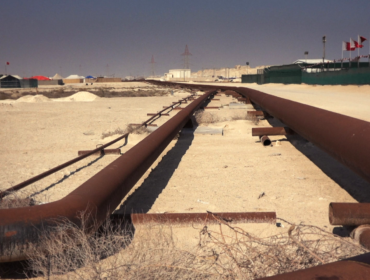Anybody who has to do with sports is familiar with the story of acidic muscles terminating exercise. Once the muscle has gone acidic – meaning it has slipped into an oxygen deficit – nothing can help resuming the work-out. We all know that, and do we ever doubt this fact? And now, all that is supposed to be wrong? Correct. But why? Read on if you like.
The Cardiovascular-Anaerobic Training Model
At this point two models of training physiology get mixed: the cardiovascular-anaerobic model and the energy supply model. The consumption of oxygen VO2 (max) and the lactate level are parameters that are said to define the performance limits. If they do so at all, they do this indirectly. Both measures are part and parcel of complex regulatory processes, but they are not determining your condition, and they don’t set the performance limit.
That is why fluctuations of these measured values between individuals are so high, and levels above the average range may not mean anything for the respective individual. This cardiovascular-anaerobic model is by far the most popular and unquestioned training concept.
Does a muscle become acidic and stop work?
This proposition is based upon the work of the British scientist A.V. Hill from the 1920ies. Hill back in those days had clearly realized that the first muscle to become anaerobic should be the heart. Today athletes and coaches seem to have forgotten about the heart as a muscle. In this model the endurance performance is limited to the stroke volume of the heart and the linked oxygen transport capacity into the muscles. Effects of training are explained by an increased number of capillaries and more mitochondria in the muscle and an appropriate adaptation of the heart in terms of heart rate and stroke volume. So training builds up cardiovascular fitness by transporting more oxygen and therefore having more to dispose of. The delayed raising of lactate in the muscles and blood is put in direct context to these facts and assumes to explain the shifting of the aerobic-anaerobic threshold.
If lactate exceeds the threshold, then –this is what the model states – exhaustion symptoms become apparent.
In the same breath is mentioned that an optimized muscle can use more fat for the production of high energy ATP. So we conclude that the carbohydrate buffers are spared and the endurance performance rises. Of course, these training induced changes to the heart, the vessels, the skeleton muscles and the metabolism are proven by studies. The only question remaining is, if they really stand in direct correlation? That if you terminate exercise, it is due to a peripheral phenomenon such as lactate accumulation.
The heart is also a muscle, it would become acidic first
If this model were 100% true, the heart would suffer from the oxygen deficiency first and become acidic. The results of an acidic or totally exhausted heart would be fatal. Heart patients know how bad a heart feels when under-supplied with oxygen. A strong burning pain arises in the heart region (angina pectoris). Not a single healthy athlete at his/her limits suffers from this pain.
Until this day there has not been any study that gives evidence of the muscles being under-supplied with oxygen or blood and therefore being forced into anaerobic labor. We are always focusing on those same muscles, which we keep such a close eye on whilst training and forget to consider the remaining organs as brain, kidneys, liver, lungs, gut etc… whose proper functioning is fundamental for top performance and survival even.
A healthy heart will never go acidic even at peak performance
Obviously we reach our limits as a part of a regulation process before the heart can reach such a threatening state. As an example at high altitude where oxygen concentration decreases the phenomenon of muscles turning acidic should, if we agree with the cardiovascular-anaerobic model, appear earlier. But it does not. It is just the other way round. The blood lactate levels decrease with increasing altitude and intensive training (lactate-paradox). The maximum heart rate and the heart’s stroke volume goes down as well at high altitude. Obviously, a decline of performance at high altitude is due to muscles that have distinctly less power, even though conditions are aerobic.
Isn’t it it interesting that the heart rate decreases with increasing altitude which is exactly the opposite of what one would expect? So at high altitudes supply of the lungs may turn into a performance limiting factor.
Conclusion:
The above said indicates that other factors have to play a role in setting performing limits. Therefore other training models such as
- Biomechanical model7
- Energy supply/energy deficiency model
- Muscle recruiting/muscle strength model
- Psychological, motivation model
should not be neglected, when you are analyzing your performance, be it good or bad. Only if you are aware of the underlying thought concepts, your interpretation of data is leading you in the right direction.






